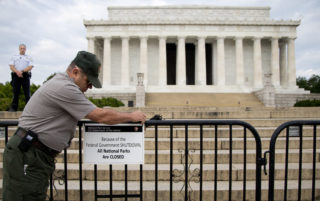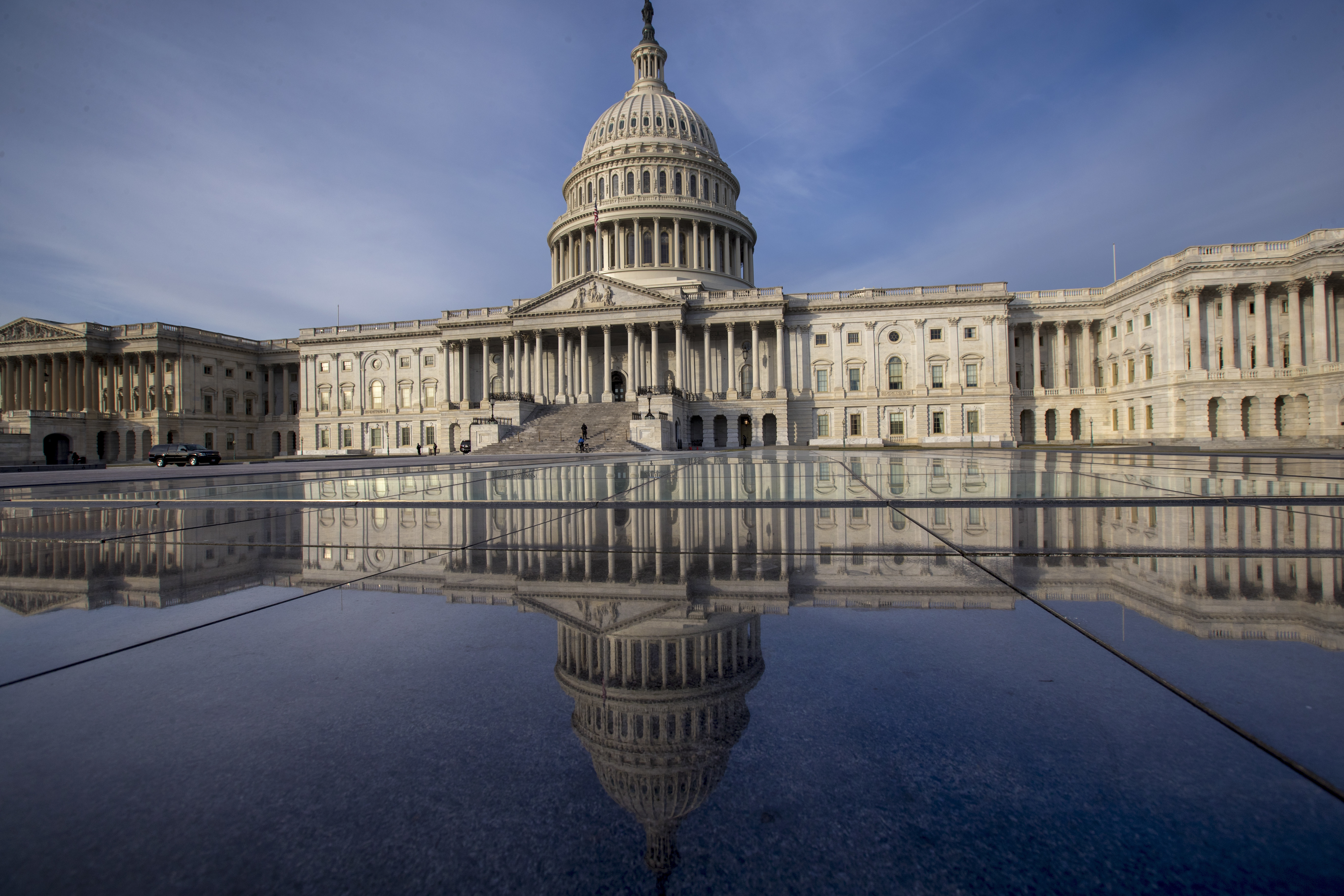This is the third edition of the NewsCut Guide to a Government Shutdown in its 10-year history, a fact of trivia that underscores how dysfunctional democracy and representative government actually is.
If the government shuts down at midnight, President Donald Trump would join President Jimmy Carter as the only two presidents who were in office for a government shutdown when their party controlled Congress.
If you’ve got questions, submit them in the comments section and we’ll try to get them answered.
Will I get my Social Security payment?
Yes. But there is some dispute over how many Social Security workers would stay on the job. You could still apply for Social Security benefits and disability benefits, but that’s a process that can drag on for a year or more, anyway.
What about food stamps?
The Department Agriculture says the Supplemental Nutrition Assistance Program (SNAP), the Child Nutrition Programs, and the Special Supplemental Nutrition Program for Women, Infants and Children (WIC) will continue at least through the end of February and possibly into March.
What is the most obvious effect of the shutdown?
700,000 government employees (some estimate as many as 1 million), who are deemed “non-essential” will be out of work and if you believe that money in people’s pockets fuels the economy, that will not only cause hardship for them, of course, but also for businesses where they won’t be spending money until things thaw.
A lot tourism grinds to a halt, however. You’ll see plenty of TV footage of angry people who’ve been saving for a vacation, turned away from a locked Smithsonian or National Archives, or any other government-run museum or attraction, including the national parks. On the other hand, it’s not a big tourism season, right now.
And the Trump administration is considering plans that might allow national parks to stay open even without rangers.

Those are obvious effects. Less obvious are the more mundane tasks of government.
For example, there are 16 research ships at sea at the moment, operated by the a division of the Commerce Department. When the government shuts down, they’ll will stop their research and return to port. It could take two weeks for them to return. Nearly 300 people are involved in those projects.
Another example: It would be a bad time for one of those salmonella outbreaks or mysterious illnesses to occur. The Centers for Disease Control will stop tracking them during a shutdown.
Even flu monitoring will be affected, although states can continue to monitor their own outbreaks, but they won’t be able to coordinate investigations.
I work for the federal government. Will I have to go to work?
From Federal Computer Week: There are two types of shutdowns. In a “soft shutdown,” federal employees would come to work but could not do anything “productive,” that is, anything to carry out the central duties of the agency. They could clean up their desks.
A “hard shutdown” would mean employees are furloughed from work. Only those few exempt employees would come in.
The soft shutdown would only occur if the president believes there’s a chance for a rapid compromise with Congress. Hard shutdowns would signal a bleaker picture.
How many federal workers would be furloughed?
In the 1995 shutdown, about 800,000 government workers were furloughed. Back then, there were 2.92 million federal employees, excluding the military. As of the latest data run (2016), there are now 2.75 million federal employees, excluding uniformed military.
How many of these workers are in Minnesota?
31,900, most of them are employed by the Department of Veteran Affairs.
Will I be paid during the furlough?
In the last shutdown, workers were paid retroactively. So the government doesn’t save on salaries during a shutdown. However, people who work under contract with the federal government would not likely be paid. At all.
There is a growing chorus, however, that is saying government workers shouldn’t be paid if they’re not going to work. That will probably be the first debate that will get all the attention after the shutdown crisis itself is solved.
What if I want to work unpaid?
You can’t. Federal law prohibits the government from accepting volunteer work.
Does Congress get paid during this?
Yes. The key is that a government shutdown only affects operations that are funded through annual appropriations. Salaries for the House and Senate members are funded by permanent appropriations.
The people who work for Congress, however, may be out of luck. Congresspeople get to decide which of their employees are “essential.” All the rest get sent home. And it’s always good for employee morale to be told the boss doesn’t really need you.
Will the military be paid?
Yes. Even Washington understands the public relations nightmare that comes with not giving a soldier at war a paycheck. And it takes more than a shutdown to stop a war.
Would the VA facilities close?
No. Medical employees who provide inpatient and emergency care are considered essential. But outpatient treatment would likely be curtailed.
Would federal courts close?
Bad news, criminals. They stay open. And it’ll be a typical time at federal prisons.
Would it be safe to fly?
Air traffic controllers are considered essential so there would be no disruption in ATC activities. Metal fatigue in aging aircraft, however, doesn’t know when the government is operating and when it isn’t.
Security checkpoints shouldn’t be affected.
What about my financial aid for school or grants to universities?
Ninety percent of the Department of Education would shut down, according to the Secretary of Education. And while she says that will not include people responsible for paying out financial aid, her memo suggested that anything longer than a one-week shutdown will make things start to hurt:
A protracted delay in Department obligations and payments beyond one week would severely curtail the cash flow to school districts, colleges and universities and vocational rehabilitation agencies that depend on the Department’s funds to support their services. For example, many school districts receive more than 20 percent of their funds from Department-funded programs. … Under a shutdown, the likely disruption to Department grant programs will be a potential delay in activities necessary to make competitive and formula grant awards later in the fiscal year. For the most part, these employees will be furloughed. In addition, citizens and institutions seeking specific information regarding the impact of a shutdown will have limited access to information.
What if there’s a wildfire, tornado, hurricane or other disaster?
Disaster response is not affected in a shutdown. But there’s more to that statement than meets the eye.
There’s still an $81 billion hurricane relief package that’s stuck in Congress. It’s part of the overall budget battle. It might be in a stopgap bill; it might not be. In either case, a government shutdown prevents any of that money from reaching anybody who needs help.
My business works on government grants, will I be affected?
If the contract is in force now and funds have already been appropriated, generally no. No new contracts can be awarded and if you need a federal worker to actually cut the check during the shutdown and that person is non essential, there’ll be no check. Essential contracts — military, for example — won’t be affected. A bridge project that’s underway probably won’t be affected.
Over $43 billion has been awarded in contracts for the fiscal year 2018.
But here’s the thing: In any shutdown, each political party tries to pin the blame on the other and it’s always possible that they’ll go to extreme lengths to make a shutdown “hurt” more than it has to if they think they’re scoring points.
If the government shuts down, who will bring me my daily supply of credit card offers?
No problem. The mail will still be delivered.
Will government websites keep running?
Some will if they’re operated by the IT departments of those functions deemed essential. Others will have no IT staff working. The Office of Management and Budget has said in the past that people’s desires to see the activities of a federal agency are not grounds for keeping IT staff on the job.
What are some less obvious effects of the shutdown?
From the Boston Globe: “(In the 1995 shutdown) …the Centers for Disease Control and Prevention stopped tracking the spread of diseases such as AIDS and the flu; toxic waste removal at 609 sites was suspended. Work on more than 3,500 bankruptcy cases ceased, and investigations into delinquent child support cases were put on hold.”
Ports would likely shut down as the U.S. government would be unable to issue certificates for ships carrying exports to other countries. This would have no effect in Minnesota, for the most part, as the shipping season has already closed.
What if I need a visa or passport?
In 1995, 20,000 to 30,000 foreign visa applications per day went unprocessed, as did an estimated total of 200,000 U.S. passport applications, according to PBS.
Can I still get a weather forecast?
You may think the weather forecast comes from your meteorologist, but it actually comes from the federal government. The Commerce Department shuts down, but its weather data-gathering unit, NOAA, is considered essential.
It sounds like much of the federal government is deemed “essential” and won’t shut down
Hardly. Here are the agencies that shut down.
Agriculture
Education
Energy (except for functions that oversee the safety of the nation’s nuclear arsenal, dams and transmission lines).
Environmental Protection Agency.
Food and Drug Administration.
Health and Human Services.
Housing and Urban Development.
Interior, including National Parks.
Internal Revenue Service.
Labor, including Bureau of Labor Statistics.
NASA.
National Institute of Health.
Smithsonian.
Each agency has a contingency plan for a shutdown. You can find them all here.
How long will it last?
If history is any guide, a few days. The longest shutdown lasted about three weeks.
How much will the government save during the shutdown.
Nothing. In the last serious government shutdown threat in 2013, estimates, which some considered low, suggested it would cost the government $100 million a day.
Standard & Poor’s estimates for this shutdown suggest it will cost the U.S. economy $6 billion a week, some of which can be recovered later.
Where else might I feel the effect of a shutdown?
Got an IRA or 403 retirement plan in the stock market? The stock market hates uncertainty. The big-runup in stock prices — and your portfolio — in recent months could end and, possibly, reverse. It’s impossible to predict what the markets will do but nothing much good comes out of a government shutdown and the stock market doesn’t usually embrace times that aren’t good.
Historically, the market has pulled back during a shutdown, although it has been short term.
When the market opened this morning, the Dow jumped 27 points. Within an hour, however, it had taken a dive.
Still, there’s reason for a big “meh” on the question. In 2013, the S&P 500 gained 3.1 percent during the shutdown.

